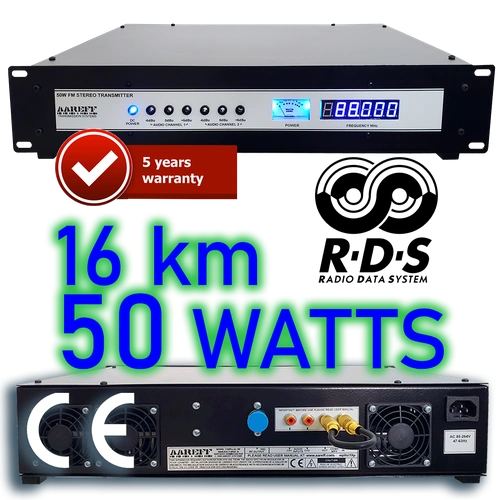
50W FM Transmitter Stereo DDS with RDS and Audio Processing

- SUPER SILENT OPTION
- STEREO WITH AUDIO PROCESSING OPTION
- DYNAMIC USB/PC CONTROLLED RDS
- DDS FREQUENCY CONTROL
- ROBUST LDMOS RF OUTPUT
- XLR BALANCED INPUT
- INCLUDES SHIPPING + 5 YEAR WARRANTY
- EXCEEDS CE/FCC TECHNICAL SPECIFICATION

|
LIMITED WARRANTY |
Suitability
This transmitter is the little brother to our 100 watt transmitter. The 50 Watt FM Transmitter is built for extreme reliability, utilizing a premium 150W transistor that operates far below its maximum capacity—running at just 50 watts—to ensure unmatched dependability and service life. This system offers a high-quality, stable signal that is ideal for localized coverage applications. It is the perfect, affordable solution for Campus Radio stations, Local Community Radio broadcasts in neighborhoods and small towns, and specialized uses like Temporary Event Broadcasting (e.g., festivals and drive-in movie audio). For commercial operators, it also serves as a robust exciter for larger systems or a dependable unit for licensed Low-Power Commercial use.
This transmitter is available as a super silent version, see below for details.
Designed for non-stop, global operation, the 50W FM Transmitter ensures easy integration and compliance across major regulatory regions. The complete system package is configured to meet the regulations of the European Union (EU) and most other countries in the world. This is achieved by adhering to both stringent EU/CE harmonized standards (vital for markets like the United Kingdom, Germany, and France) and the technical requirements of the US FCC and ISED Canada. Furthermore, its robust design makes it suitable for deployment in high-growth broadcast markets such as Australia and South Africa, simplifying compliance and deployment worldwide.
Which FM Transmitter Version Do You Need?
Selecting the Optimal Version for Your Broadcast Requirements.
Choosing the correct version of your FM Transmitter is crucial for operational efficiency and meeting your specific broadcast goals. We offer professionally engineered systems that cover 90% of customer requirements right out of the box, ensuring you get the exact functionality needed for your station.
These are the two primary, professional versions of our FM Transmitters:
◼ Stereo with RDS and Audio Processing Version
Ideal for: Any station prioritizing high audio quality, professional stereo separation, and dynamic Radio Data System (RDS) functionality for displaying station name, song titles, or slogans. This is the most feature-rich option for modern, professional broadcasting.
◼ MPX Version
Ideal for: Experienced engineers who handle external audio processing and stereo encoding outside the transmitter. This version accepts a pre-processed and encoded composite signal (MPX) for direct modulation, offering maximum control to the audio chain expert.
Need Customization?
We understand that custom requirements exist. If you need alternative versions (e.g., stereo only, no RDS, no processing), we can accommodate these requests to match your specific technical setup.
You will find detailed descriptions of both the Stereo/RDS and MPX versions, including how they work, technical specifications, and the final price INCLUDING delivery to your country, in the following sections.
Contact Our Experts
If you are still unsure, you are always welcome to contact us at: info@aareff.com or ws: +1 829 6980733 and we're more than happy to advise you.
We are happy to provide personalized technical advice to ensure you choose the system that maximizes your EIRP and operational efficiency.
Do You Have A Question?

Stereo, RDS, and Audio Processing Version: The Ultimate All-in-One FM Broadcast Solution
Optimal Performance & Compliance: Why Choose This Version?
If you're seeking a transmitter that balances powerful broadcasting with strict legal compliance, this version is your definitive choice. It eliminates complexity for both new and experienced broadcasters.
• Beginner-Ready: The unit features automatic audio level adjustment, ensuring your 50 watt transmitter always adheres to state regulator specifications. Start broadcasting legally and effortlessly.
• Professional-Grade: Ideal for experienced users who prioritize efficiency. It includes everything in one single enclosure, minimizing setup time and cable clutter.
Intelligent Audio Processing for Maximum Reach
Our internal audio processors are engineered to give you a competitive edge:
• The processing keeps the audio level LOUD—allowing your station to compete effectively with others on the dial.
• Crucially, it prevents over deviation, ensuring your powerful signal remains legal and compliant with all permit requirements.
• This version perfectly executes the delicate balance of maximum loudness while maintaining a legal signal.
-500.webp)
The audio inputs industry standard 600 ohm +4 dBu balanced using XLR connectors.
In addition, this version INCLUDES RDS. This allows everybody to see your station name and more scrolling across the car radio display.
The RDS is not just ordinary RDS, it is fully programmable dynamic RDS. This means the transmitter can be connected to a PC by a USB cable. The RDS can be changed on the fly in real time by using USB PC CONTROL shown below.

Super Silent ADDED Option
What is SUPER SILENT? it means it's as quiet as a mouse and can use it in a live mic studio without background noise. The video demonstrates the 100 watt transmitter, but it is exactly the same for the 30 and 50 watt units.
If you want SUPER SILENT option, MAKE SURE YOU ADD IT AS AN OPTION in the price panel below.
SUPER SILENT means less 20dBA, this is comparable to a low level whisper in a studio, the chances are other equipment, air con or studio ventilation is higher in volume.
Flat 30Hz to 76KHz MPX Input: Raw Precision for Expert Processors
Professional-Grade Raw MPX Input
This version is specifically available for experienced users who require a straight, raw MPX input for external signal processing.
1. Zero Tilt for Multiband Processors
• The holy grail of multiband audio processing is flat low-frequency audio response, and this input delivers exactly that.
• The 160Hz square wave test (shown in the image) demonstrates a perfectly square wave with zero tilting, making it ideal for integration with high-end commercial audio processors like Orban, Inovonics, Omnia, and Stereo Tool.
2. Technical Excellence: Ultra-Stable VCO System
Superior performance is guaranteed by our core hardware design:
• VCO Technology: Utilizes a Hartley-based, lightly coupled push-pull VCO.
• Extraordinary Stability: This VCO exhibits extraordinary stability, deviating by less than 10kHz from its designated frequency on its own—even when the Digital Synthesis System (DSS) and the Phase-Locked Loop (PLL) are switched off.
-500.webp)
Performance Benefits: Clean, Low-Noise Audio
The inherent stability of the VCO leads to two crucial audio benefits:
• Low Noise: The PLL only needs to make minor corrections (maintaining frequency within about 300Hz, ensuring the audio remains exceptionally clean and low-noise.
• Preserved Low-End: The PLL's control voltage is heavily low-pass filtered to just a few Hz. This slow loop filter ensures that low frequencies around 30Hz are not misread as frequency drift, passing completely unaltered to the varicap.
Result: This preserves the essential low-end audio response demanded by high-performance audio processors.
Antennas
On delivery the equipment is ready to plug in and use with any suitable 50 ohm antenna system such as our:
• SINGLE DIPOLE
• 4.8dBi 2 DIPOLES
• 7.8dBi 4 DIPOLES
• 10.8dBi 8 DIPOLES
• 4.8dBi 5/8 ANTENNA
• -0.8dBi CIRC. DIPOLE
• Folded Dipole
Our system package the 50W EIRP system includes this transmitter with a dipole antenna and very low loss LMR400 cable to give you a full system that will comply with the regulations of the European Union and most other countries in the world.
Reliability
This transmitter uses a 150 watt mosfet device in it's output only running at 50 watts, this makes it HYPER reliable, it's like a Ferrari on tick over. It will never break and it will handle any amount of antenna faults, high VSWR or reflected power.
VSWR Protection
The 50 watt transmitter uses a 150 watt Mosfet transistor, so it can handle a 100% reflection and still be withing the safe limits of the transistor. We can with confidence guarantee that the transmitter output will not be damaged in any reflected power condition.
Construction
The enclosure is made in strong 16 gauge steel, powder coated and baked in satin black. This leaves a tough, durable surface that will never rot or corrode and be cleaned to shine for decades. The front panel is 19 inch across and 2U (3.5 inch) high with a depth of 12 inches, so it will fit with ease into a standard rack. It is very strong and difficult to damage even under extreme handling.
Configuring Power, Dev. and Freq.
This transmitter is fully adjustable by a competent engineer to operate from 87.5 to 108 MHz, in 100 KHz steps, pre-emphasis of 50 or 75uS and adjustable power from 2 to 50W. Like all our transmitters, this is easily done by reconfiguring the dip switches on the under side panel. When we test this we have to set it to some frequency, we prefer it to be the one you choose, so please let us know your frequency.
Compliance
The stereo version with audio processing and limiting meets all the regulatory standards required out of the box and pre configured. In fact if you send us a copy of your permit and it's conditions, we will set it up exactly to the specification. This equipment complies with EU/CE harmonised standards and FCC technical requirements for FM broadcasting. More information HERE
RF Specification
All stated measurements were made at 220VAC at 27 Deg. Celsius ambient temperature unless stated.
| Power Output | Adj. 1-50 Watts into 50 ohms |
| Spurious Emissions | Less than -75 dB ref to carrier |
| Harmonic Emissions | Less than -70 dB ref to carrier |
| Freq Stability | +/- 1 KHz max. typ. +/-300 Hz |
| Deviation Sensitivity Stability | +/-2 % max |
| Freq Fine Adj | > +/- 1000 Hz |
| Freq Range | 87.5 to 108 MHz in 100 KHz steps |
| Out of Lock RF Muting | Less than -70 dB ref to carrier |
| Residual AM | Less than 0.5 % |
| Synchronous AM | Less than 0.5 % |
| RF Ruggedness | Any VSWR phase or length of time |
| Output Connector | N-Female |
| Operating Temp | -20 to +40 Deg C |
AF Specification
| Pre-emphasis | (50 uS/ 75 uS/ None) Selectable | |
| Audio Input Connector | XLR True Balanced 600 ohm No Ground Ref./ Floating | |
| Audio Input Sensitivity | +4 dBu for +/- 75 KHz dev. | |
| Version | MPX | Stereo and Audio Processor |
| Signal To Noise Ratio | 80dB | 65dB |
| Frequency Response | 30Hz-76KHz | 30Hz-15KHz |
| Audio Distortion | Better than 0.1% / 60dB THD | Better than 0.1% / 60dB THD |
AC Specification
| Input Voltage | 90-264 V AC 135-370 V DC 47-63 Hz |
| Input Power | 95W for 50W RF OUT with RF SWR less than 1.5 |
| Working Humidity | 20-90% RH non-condensing |
| Safety Standards | UL60950-1 TUV EN60950-1 BSMI CNS14336 CCC GB4943 J60950-1 approved |
| EMC Emission | Compliance to EN55022 class B EN61000-3-2 3 FCC PART 15 / CISPR22 class B CNS13438 class B GB17625.1 |
| EMC Immunity | Compliance to EN61000-4-2 3 4 5 6 8 11 light industry level criteria A |

 +1 829 698 0733
What Do You Need? Talk To Us
+1 829 698 0733
What Do You Need? Talk To Us
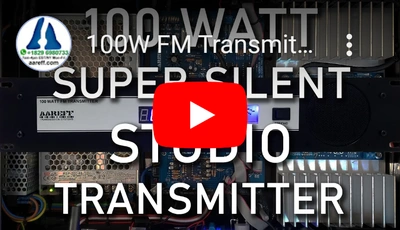
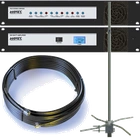
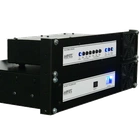
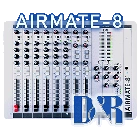
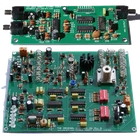
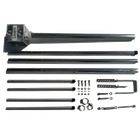
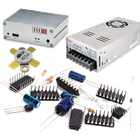





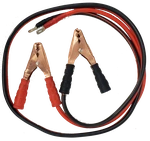
 The ANTENNA is very important, check this is installed and ready to use. DO NOT EVER POWER A TRANSMITTER OR RF AMPLIFER WITHOUT AN ANTENNA CONNECTED.
The ANTENNA is very important, check this is installed and ready to use. DO NOT EVER POWER A TRANSMITTER OR RF AMPLIFER WITHOUT AN ANTENNA CONNECTED.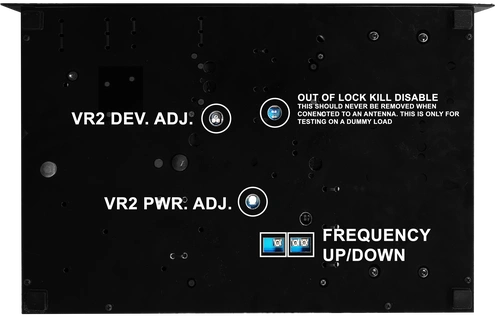


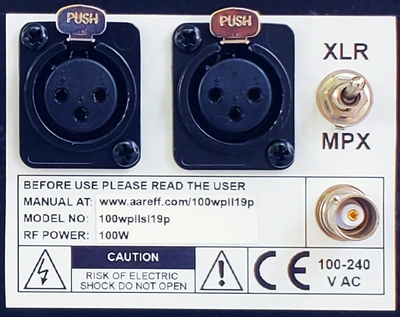
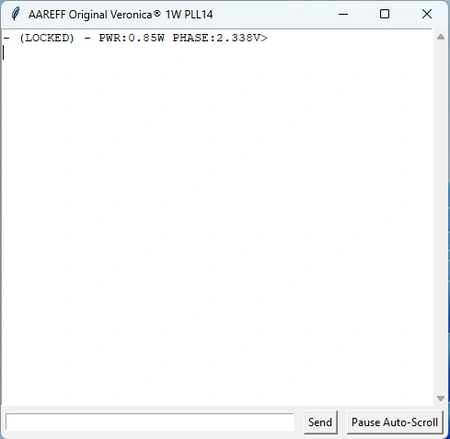
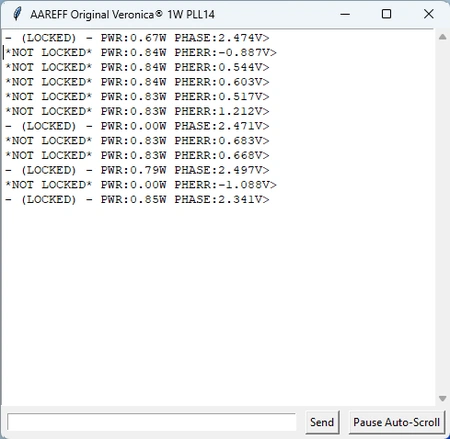
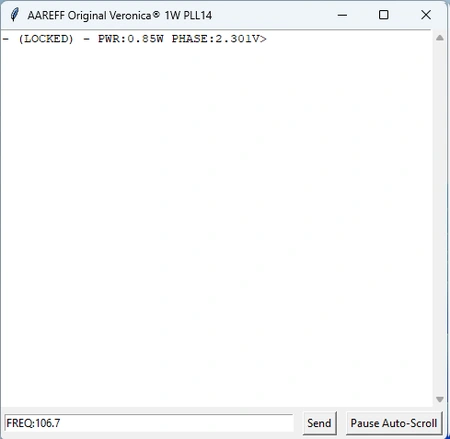
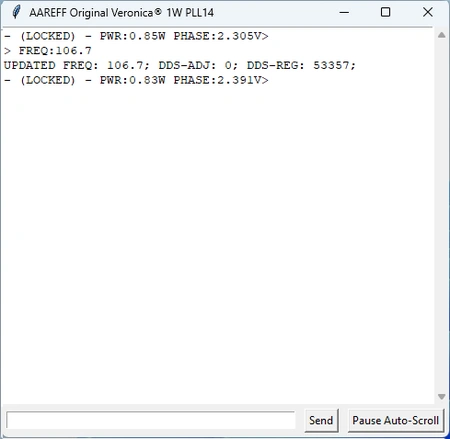
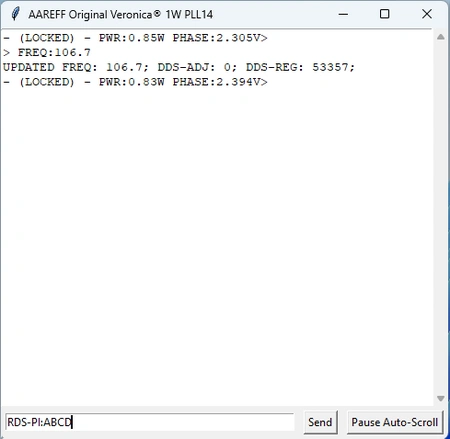
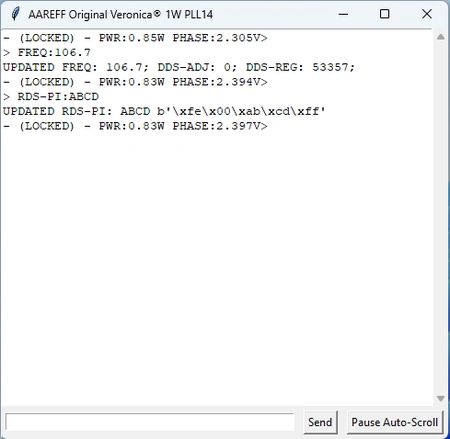
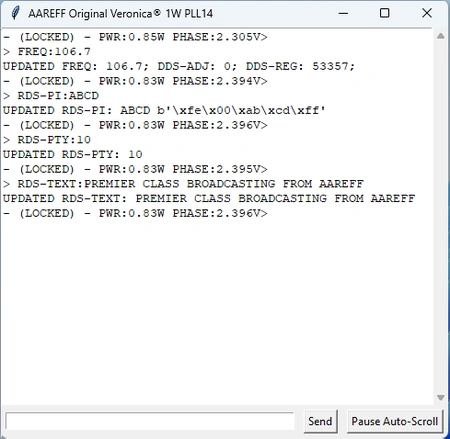

 Do not adjust any factory set internal controls.
Do not adjust any factory set internal controls.